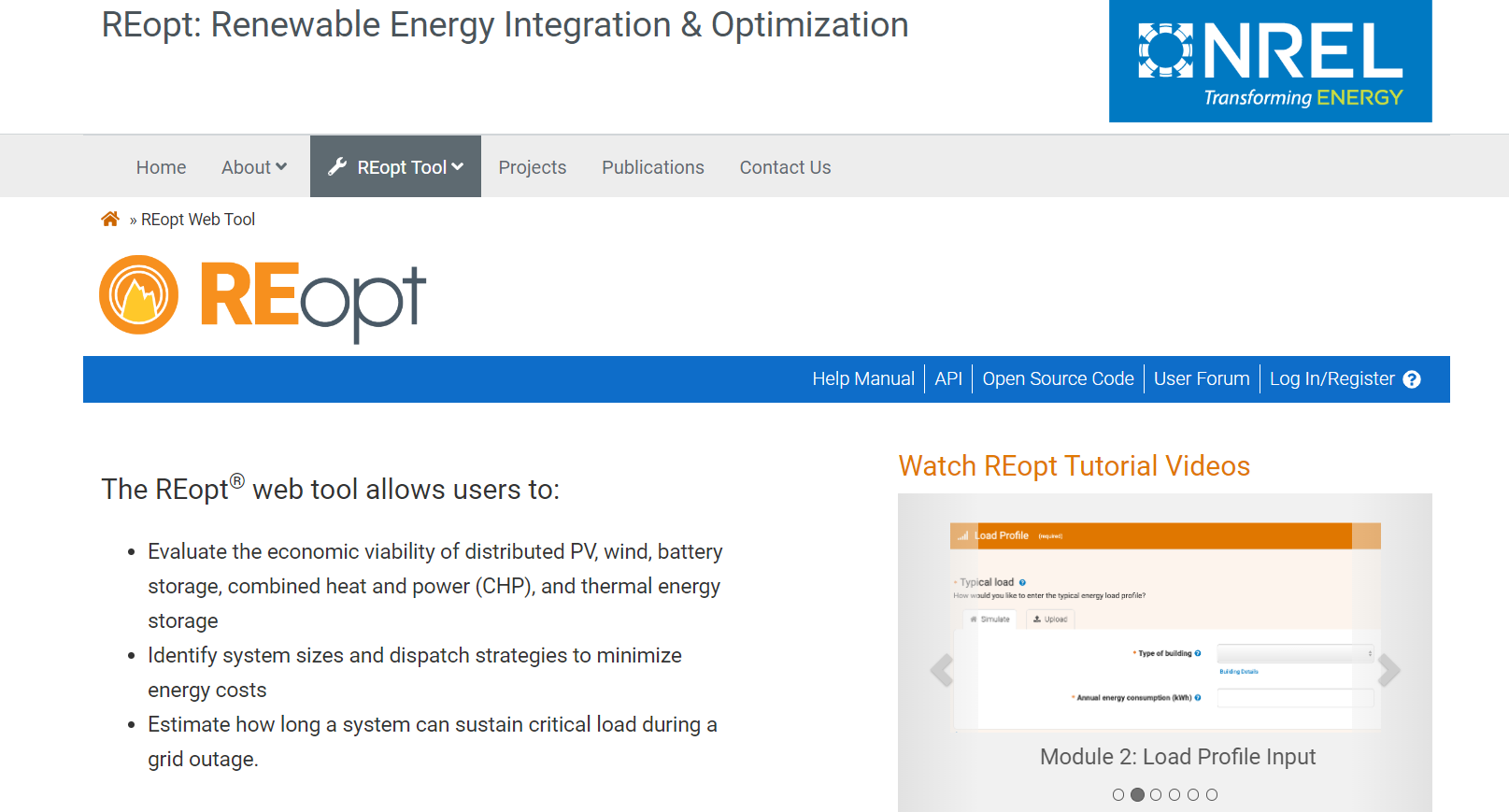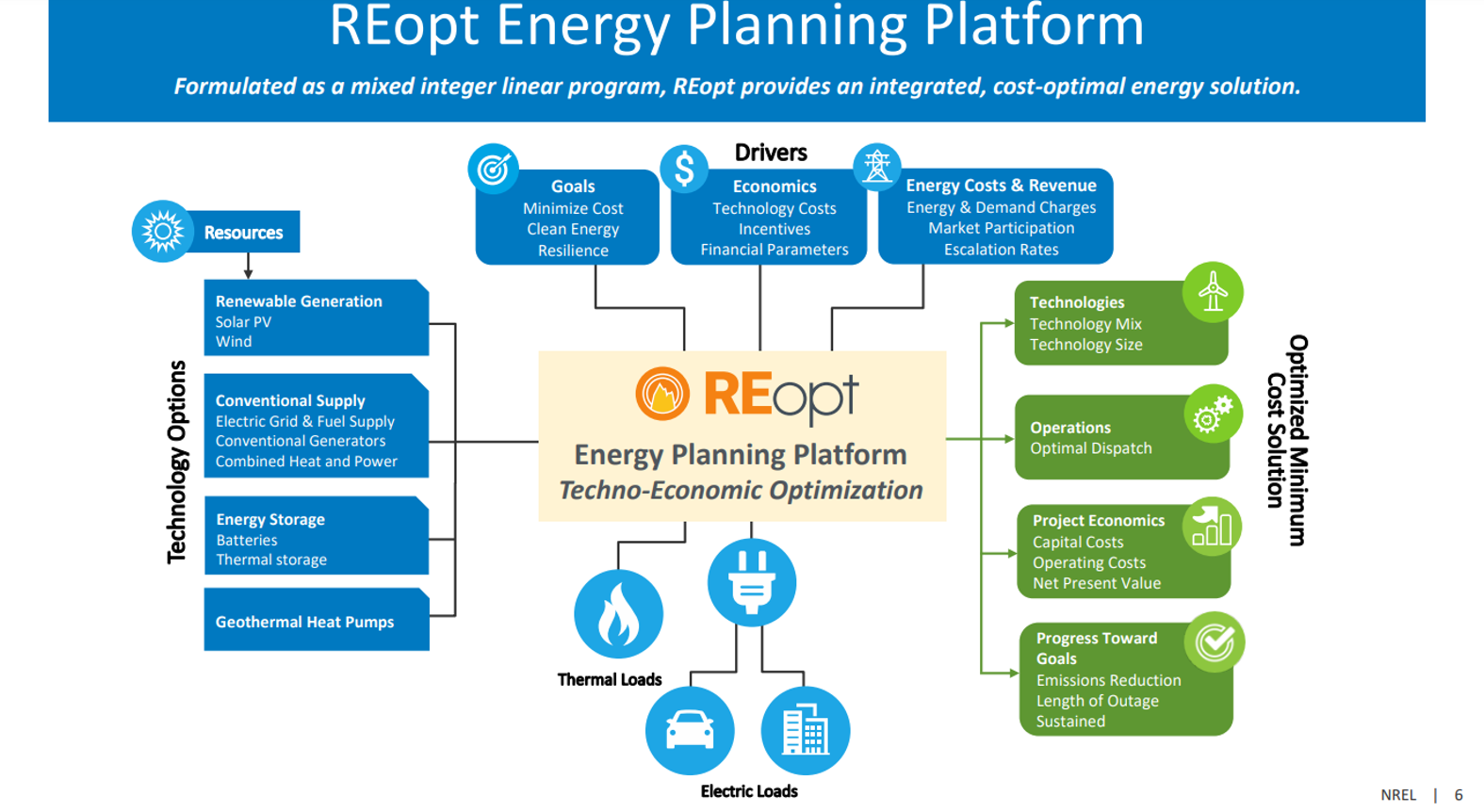REopt: A Platform for Energy System Integration and Optimization
Description
The REopt model is a techno-economic decision support tool that is employed to optimize energy systems for many applications, including buildings, campuses, communities, and microgrids. The principal utilization of the model is to the optimization of the integration and functioning of energy assets located behind the meter.
REopt is an algorithm that is expressed as a mixed-integer linear program. It aims to solve a deterministic optimization problem by identifying the most favorable combination, size, and operational plan for technologies selected from a set of potential options. The objective is to ensure that both electrical and thermal demands are satisfied at each time interval, while minimizing the overall cost over the system's lifespan. The range of technologies commonly considered in the selection of candidates includes photovoltaics, wind power, solar water heating, solar ventilation air preheating, ground source heat pumps, biomass, waste-to-energy, landfill gas, diesel and natural gas generators and combustion turbines, energy storage, dispatchable loads, and the utility grid.

Gallery

Classifications
Scale of implementation
REopt enables national-scale analysis of renewable energy and storage economics and impacts on deployment.
Type
Developed by the REopt team, the tool guides users to the most cost-effective or resilient PV, wind, CHP, and battery storage options at no cost to users. Available via web tool, application programming interface (API), and open source.
Phase of solution
REopt helps partners make well-informed energy investment decisions backed by credible, objective data analysis by answering questions such as:
- How should DERs be sized to minimize site energy costs, achieve a renewable energy or emissions reduction target, and/or provide resilience value?
- How should I dispatch these technologies to maximize their value?
- What is the value (or net present value) of a project?
Target audience
Reopt provides solutions for a range of users including researchers, developers, building owners, utilities and industry.
Key features-functionality
With the utilization of REopt, individuals have the capability to:
- Quantify the changes in emissions and assess the corresponding monetary implications of reducing emissions on climate-related outcomes, specifically focusing on carbon dioxide (CO2) emissions, as well as the influence on health outcomes associated with nitrogen oxides (NOx), sulfur dioxide (SO2), and fine particulate matter (PM2.5).
- Establish a target for reducing climate emissions and using the REopt tool to find the most cost-effective investment in distributed energy resources (DER) to achieve the objective.
- Incorporate climate and/or health costs into the optimization target, so enabling these costs to influence the scale and dispatch of the system.
- In order to calculate emissions rates and costs, one may either utilize preset numbers based on location or provide specific values as input.
- The assessment of health and climate emissions over the duration of the project should take into account the potential future improvements of "greening the grid".
References & Sources for Further Reading
- NREL official website: https://www.nrel.gov/
- NREL overview presentation: https://www.nrel.gov/docs/fy22osti/82426.pdf
- NREL technical repost: https://www.nrel.gov/docs/fy17osti/70022.pdf
